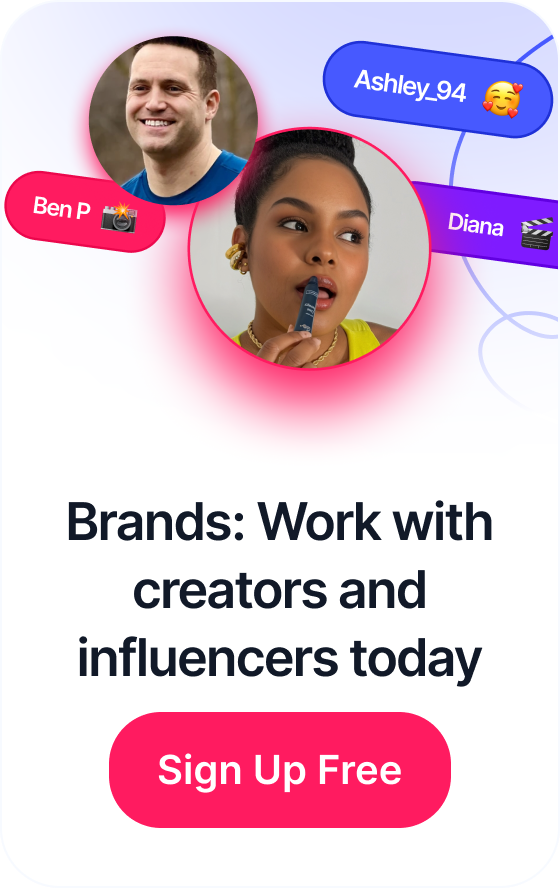 9 User Generated Content Strategies to Boost DTC Sales in 2025
9 User Generated Content Strategies to Boost DTC Sales in 2025
When your content approval process is broken—or worse, doesn't exist at all—you get a special kind of chaos. It’s marked by frantic revisions, blown deadlines, and messaging that’s all over the map. It feels a lot like building a house without a blueprint. Everyone has an opinion, but nobody’s following a plan, leading to wasted effort and a foundation that's bound to crumble.
Table of Contents
Why Your Content Workflow Is Failing

Does creating content in your organization feel more like a mad dash to the finish line than a well-oiled machine? If you're nodding your head, you’re definitely not alone. Too many marketing teams are stuck in a cycle of reactive feedback, where a last-minute change from an executive can derail an entire campaign. Or worse, conflicting edits from two different departments send your creators right back to the drawing board.
This kind of ad-hoc approach is a recipe for friction. Without clear ownership or a set order for reviews, important steps get skipped and quality takes a nosedive. What you're left with is a vicious cycle of inefficiency that waters down your brand's voice and hurts the bottom line. In fact, without a formal structure, up to 40% of projects face delays from misaligned feedback alone. It’s a fast track to endless revisions and weak messaging.
The Real Cost of Disorganization
The fallout from a broken workflow goes way beyond just missed deadlines and frustration. When your team is flying blind without a clear content approval process, you start seeing the same problems pop up again and again:
- Inconsistent Brand Messaging: With no central checkpoint, content can easily go live that’s completely off-brand in its tone, voice, or visual style. Over time, that chips away at the trust you've built with your audience.
- Reduced Productivity: Team members burn precious hours trying to translate vague feedback, merge contradictory edits, or hunt down approvals in endless email threads and Slack DMs.
- Compromised Quality: When you're constantly rushing to meet deadlines in a chaotic review cycle, mistakes happen. We’re talking typos, factual errors, and off-brand creative that just doesn’t land with your audience.
A well-defined content approval process isn’t about adding red tape; it’s about creating clarity. It transforms content creation from a source of stress into a scalable, predictable engine for growth.
At the end of the day, a disorganized workflow makes it impossible to scale your content production while keeping quality high. Every new project becomes a new firefight, and team morale takes a hit from totally preventable mistakes. Putting a system in place isn’t about control—it's about giving your team the structure they need to do their best work. To keep your content consistently on-brand, take a look at our guide on how to create brand guidelines to anchor your approval process.
Building a Modern Approval Workflow Step by Step
Creating a solid content approval process is like building an assembly line for your creative work. Every single stage has a specific job, making sure that whatever comes out the other end is high-quality, on-brand, and ready to meet its audience. Instead of a chaotic, last-minute scramble, you get a predictable system that anyone on your team can understand and follow.
This kind of structure takes the guesswork out of the equation and makes sure no critical checks get missed. When you define each stage, you transform your workflow from a major source of stress into a repeatable engine that just works. Weaving in workflow automation is also a game-changer here, as it helps push assets from one person to the next without someone having to manually nudge them along.
Think of it as a clear, sequential journey for every piece of content.

This prevents people from jumping the gun with feedback and ensures each review builds on a solid foundation laid by the previous step.
Before we dive into the steps, it helps to know who's who in this process. Different people have different parts to play, from the initial creator to the final decision-maker.
Key Roles in the Content Approval Process
| Role | Primary Responsibility | Key Stage(s) |
|---|---|---|
| Content Creator | Creates the initial draft based on the creative brief. | Step 1 |
| Editor / Brand Manager | Checks for grammar, style, tone of voice, and brand guideline adherence. | Step 2 |
| Subject Matter Expert (SME) | Verifies the factual and technical accuracy of the content. | Step 3 |
| Legal / Compliance Officer | Reviews for legal risks, claims, and regulatory compliance. | Step 3 |
| Final Stakeholder | Provides the ultimate green light, ensuring content meets strategic goals. | Step 4 |
| Marketing Operations | Manages the final publication and archiving of the asset. | Step 5 |
Having these roles clearly defined prevents confusion and ensures the right people are involved at the right time. Now, let's walk through what each step actually looks like in practice.
Step 1 Content Creation and Submission
It all starts with the creator. This first stage is purely about taking an idea and turning it into a tangible first draft—a blog post, a social media graphic, a video script, you name it. The creator's only job right now is to bring that initial concept to life.
The single most important tool at this stage is a strong creative brief. It's the North Star for the project, guiding the creator and making sure what they produce aligns with everyone's expectations from the very start. To really nail this, check out our guide on building the perfect https://joinbrands.com/blog/creative-brief-template/ for total clarity.
Once that draft is ready, it’s officially submitted into the workflow. This is the handoff that signals it’s ready for the next set of eyes.
Step 2 Editorial and Brand Review
With the draft submitted, it now moves to the editorial and brand review. Think of this as the first quality control checkpoint. The focus here isn't on what is being said, but how it's being said.
Reviewers at this stage are looking for a few key things:
- Grammar and Style: Is the copy clean, clear, and free of typos?
- Tone of Voice: Does it sound like it came from your brand? Is the personality right?
- Brand Guidelines: Are the right fonts, colors, and logos being used? Does it match the visual identity?
This step ensures every piece of content reinforces your brand identity and meets a baseline level of quality before it gets any deeper into the process.
Step 3 Subject Matter and Legal Review
Once the brand and style elements are locked in, the content gets passed to the specialists. This is where you bring in the experts to verify the substance of what you’re saying. Subject matter experts (SMEs) will check for factual accuracy, technical correctness, and industry relevance.
At the same time, if your content touches on anything sensitive—like making specific claims, using testimonials, or discussing legal matters—it absolutely has to be reviewed by the legal or compliance team. This is a non-negotiable step that protects the business from risk and ensures everything you publish is defensible and true.
This layered approach is actually a huge time-saver. While the legal team is digging into compliance, the marketing team can rest easy knowing the brand voice and style have already been signed off on. No more bottlenecks.
Step 4 Final Stakeholder Approval
After clearing all the expert reviews, the content is just about ready to go. The last stop is the final stakeholder—this could be a marketing director, a department head, or even the client. Their job isn't to get bogged down in copyediting; it’s to give the ultimate green light.
Their approval is the final confirmation that the content meets the strategic goals of the project and is officially ready for the world to see. It’s the last checkpoint before you hit "publish."
Step 5 Publication and Archiving
With final approval in hand, the content is scheduled and published. But the job isn't quite done.
The last crucial step is to archive the approved asset in a central, easy-to-access location. This builds an organized library of everything you’ve created, making it simple to find, repurpose, or audit content down the road. This closes the loop on a robust and repeatable content approval process.
How to Tailor Your Workflow for Different Content

Trying to force every piece of content through the same rigid content approval process is like using a sledgehammer to hang a picture frame. Sure, you might get the job done, but it’s messy, inefficient, and you'll probably do some damage along the way.
A quick social media post simply doesn't need the same intense scrutiny as a legally sensitive white paper. The secret to a process that actually works—one that doesn't drive your team crazy—is flexibility.
By creating a few distinct approval paths based on the type of content, you match the level of review to the level of risk. This whole approach respects your team's time, gets content out the door faster, and makes sure your most critical assets get the deep dive they truly deserve. It’s about being strategic, not bureaucratic.
Fast-Track Approvals for Social Media
Social media moves at the speed of culture. If your approval process takes days, you've already missed the moment. A clunky, multi-stage review makes your brand look slow and completely out of touch. For these low-risk, high-velocity posts, you need a streamlined "fast-track" workflow.
This usually means a much smaller group of reviewers gets eyes on it. Often, a single marketing manager or brand lead can give the final nod once the creator finishes their work. The focus here is on brand voice, basic accuracy, and making sure it fits the current campaign—not a deep technical or legal dissection.
Without a clear approval path, social media campaigns can see up to 50% longer review times thanks to endless back-and-forth. Simply centralizing that feedback in one place can speed things up by 40%, according to findings from Cloud Campaign.
Standard Workflows for Blog Posts and Articles
Blog posts and articles live somewhere in the middle. They need more attention than a tweet but less than a formal corporate report. This is where your standard, multi-step content approval process really shines.
A typical workflow for a blog post might look like this:
- Step 1: The writer submits their draft.
- Step 2: An editor jumps in to check for grammar, style, and brand voice.
- Step 3: A subject matter expert (SME) or product marketer double-checks all the facts.
- Step 4: A marketing manager gives the final green light.
This structure ensures you're putting out high-quality, accurate content without creating pointless bottlenecks. Better yet, a well-vetted blog post is a goldmine for other uses. Check out our guide on content repurposing strategies to see how you can get more mileage from every approved article.
The goal isn’t to create dozens of unique workflows. It’s to establish two or three core paths—like "Fast," "Standard," and "Rigorous"—that can be applied based on the content's complexity and risk level.
Rigorous Review for High-Stakes Content
Finally, we have the high-stakes stuff. This is the content that absolutely cannot have a single thing wrong with it. This category includes assets like:
- Paid advertisements with a serious budget on the line.
- Press releases that state the company's official position.
- White papers or e-books that make specific data-backed claims.
- Website landing pages with legal disclaimers or pricing details.
For these pieces, a painstaking, multi-stage review is non-negotiable. This workflow includes all the standard steps plus mandatory reviews from your legal and executive teams. Every claim is verified, every word is scrutinized, and every single stakeholder has to give their explicit sign-off. It’s slower, for sure, but this meticulous process is what protects your brand from legal trouble, financial loss, and a PR nightmare.
Solving Common Content Approval Roadblocks
Even the most buttoned-up content approval process can hit a few snags. I like to think of the workflow as a highway. When things are running smoothly, content zips from creation to publication at top speed. But one stalled car—a single holdup—can cause a traffic jam that brings everything to a screeching halt.
The good news? Most of these roadblocks are predictable and totally fixable. If you anticipate the common issues, you can build off-ramps and detours right into your process. This proactive approach is what keeps your content engine humming and prevents your projects from ever getting stuck in neutral.
First things first, let's pinpoint what's actually slowing you down.
Problem One: Vague and Conflicting Feedback
This is probably the most common headache. You get feedback that's either way too vague ("This just isn't working for me") or, even worse, directly contradicts what another stakeholder just said. This sends your creators down a rabbit hole of endless revisions, trying to hit a target that won't stop moving. It’s a huge source of delays and a real morale killer.
The fix is to give your feedback process some much-needed structure. This isn't about stifling creativity; it's about making every comment count.
- Tie Feedback to the Brief: Ask reviewers to anchor their comments in the project's goals. Instead of saying, "I don't like the tone," they should aim for something like, "The tone feels more formal than the 'playful and witty' style we outlined in the brief." This simple shift makes feedback objective, not just a matter of opinion.
- Use a Central Hub for Comments: Get all the feedback into one place, like a shared document or a platform with threaded comments. This lets reviewers see what others are saying and hash out any disagreements before the feedback ever gets back to the creator.
- Name a Final Decision-Maker: When opinions clash and there's no clear path forward, you need a tie-breaker. Designate one person—usually the project lead or editor—who has the final say.
Problem Two: Approval Bottlenecks
A bottleneck is what happens when one person becomes a single point of failure. The content just sits in their queue for days, waiting for a sign-off while deadlines loom. This is classic with busy execs or legal teams who are juggling a dozen other priorities.
Your workflow is only as fast as its slowest approver. Identifying and managing these potential choke points is essential for keeping projects on schedule and avoiding last-minute scrambles.
To break through these logjams, you have to make the approval process as painless as possible for your busiest people.
- Set (and Enforce) Deadlines: Be crystal clear about when you need feedback for each stage. A gentle nudge from an automated reminder can work wonders when a deadline is getting close.
- Give Them Context, Fast: Don’t just fire off a link with no explanation. Briefly summarize what the content is, what you specifically need them to check, and when you need it by. Make it easy for them to say "yes."
- Always Have a Backup: For every key approver, assign a proxy—someone who is authorized to give the green light if the primary person is out. This one move ensures that a vacation or sick day won't completely derail your schedule.
Choosing the Right Tools for Your Approval Process

If your content approval process currently lives in a horrifyingly long email chain, listen up. Moving that workflow into a dedicated platform is probably one of the most impactful changes you can make to your team's sanity and efficiency.
The right software turns a source of constant chaos into a clear, predictable system. It becomes your single source of truth, finally putting an end to version control nightmares and feedback that gets lost in the shuffle.
But with so many tools out there, picking the right one can feel like a job in itself. The trick is to look past the flashy bells and whistles and zero in on what will actually solve your team's biggest headaches.
Essential Features in Content Approval Software
When you're shopping around, some features are just non-negotiable for a smooth content approval process. Think of these as the foundation of your workflow—without them, you're just swapping one set of problems for another. Here's a quick look at the must-haves.
| Feature | Why It's Important | Best For |
|---|---|---|
| Centralized Dashboard | Gives everyone a single, at-a-glance view of where every piece of content stands. No more "Hey, what's the status on that?" emails. | Teams juggling multiple projects and deadlines. |
| Version Control & History | Lets you easily track changes, compare drafts, and roll back to previous versions without a single "final_v2_final_FINAL" file in sight. | Teams with multiple reviewers and revision rounds. |
| Automated Notifications | Automatically pings the next person in line when it's their turn to review, edit, or approve. This kills the need for manual nagging. | Any team that wants to speed up their turnaround time. |
| Direct Commenting & Annotation | Allows reviewers to leave feedback directly on the content itself (e.g., on an image or a specific line of text), removing all ambiguity. | Creative teams working on visual content or detailed copy. |
| Customizable Workflows | The ability to create different approval paths for different types of content (e.g., a blog post vs. a legal document). | Organizations with varied content needs and compliance rules. |
| Integration Capabilities | Connects with the other software you rely on every day, like your project management tool, CMS, or cloud storage. | Teams that want to avoid disjointed, siloed processes. |
Ultimately, any tool you choose should make life easier, not more complicated. If it isn't intuitive for everyone from the junior creator to the C-suite executive, it simply won't get used.
Matching the Tool to Your Team's Needs
Not every team needs a top-of-the-line, enterprise-grade solution. A small startup might get everything they need from a simple project management tool that has a basic approval add-on. They'll likely prioritize ease of use and affordability.
On the other hand, larger organizations or those in regulated industries will need more firepower. They'll be looking for robust security features, detailed audit trails for compliance, and the ability to set specific role-based permissions.
It's also worth looking beyond dedicated approval software. Many broader platforms offer features that can be built into your process. Exploring the various tools in the creator economy for content creation can uncover some really smart solutions that handle the entire content journey, from the first idea to the final sign-off.
The best tool is always the one that aligns perfectly with your team's size, budget, and the real-world complexity of your workflow.
Future-Proofing Your Content Approval Workflow
Let's face it, the content approval process of tomorrow will look nothing like the linear, step-by-step workflows we're used to today. As technology barrels forward, our methods for ensuring quality and consistency are getting a much-needed upgrade. We're moving toward smarter, more adaptive systems.
This isn't just about moving faster; it's about building an intelligent framework that actually anticipates our needs and cuts down on all that manual drudgery.
The biggest driver of this change? Artificial intelligence. AI is on the verge of personalizing approval workflows by learning individual user habits and predicting potential roadblocks. This alone could slash approval delays by an estimated 20-30%. If you want a peek at what's coming, it's worth learning more about remote approval management trends for 2025.
Embracing Automation and Centralization
Another massive shift is the push toward universal approval portals. Just imagine a single dashboard where you can approve a social media post, a blog article, and a new ad creative—no matter what system they were created in.
This kind of centralization is a game-changer. It finally breaks down the silos between our tools, giving every stakeholder one clear, simple place to manage all their review tasks.
The future of the content approval process is proactive, not reactive. It's about using technology to flag potential issues before they become bottlenecks, ensuring a smoother journey from creation to publication.
Frequently Asked Questions
Putting a new content approval process into action always stirs up a few questions. Let's tackle some of the most common ones that pop up when teams start building a more structured workflow.
How Do We Get Team Buy-In?
You can't just drop a new process on your team from on high and expect them to love it. The secret to getting everyone on board is to make them part of the conversation from the very beginning.
Involve your team in designing the new workflow so they feel a sense of ownership. Document everything clearly and offer real, hands-on training for any new software you’re introducing. A great move is to start with a small pilot project to work out the kinks before going company-wide. Most importantly, show them what’s in it for them—think fewer pointless meetings and way less frustrating rework.
What Is the Ideal Number of Reviewers?
There’s no magic number here, but a solid rule of thumb is "as few as possible, but as many as necessary." For most content, a tight-knit crew of two to three key reviewers is plenty. This usually looks like an editor, a subject matter expert, and one final stakeholder.
The trick is to give everyone a distinct role to avoid stepping on each other's toes. Too many people with the same job is a recipe for conflicting feedback and endless delays. Always—and I mean always—assign one person as the ultimate tie-breaker.
Can This Process Slow Down Creativity?
A clunky, poorly designed process absolutely can. It can feel like you're creating in a straitjacket. But a good content approval process? That’s more like a safety net. It’s there to catch mistakes, not stifle ideas.
The goal is to build flexibility right into the system. For instance, you could create a "fast-track" approval lane for low-risk content like social media updates, which might only need a quick glance from one person. A well-oiled process actually fuels creativity by giving your team clear, consistent direction. It kills those soul-crushing revision loops and frees up your creators to do what they do best: make awesome stuff.
Ready to stop chasing approvals and start shipping amazing content? JoinBrands connects you with over 250,000 creators and provides a seamless platform to manage everything from briefing to final sign-off. Streamline your entire content workflow and get to market faster. Check out JoinBrands to see how it works.








